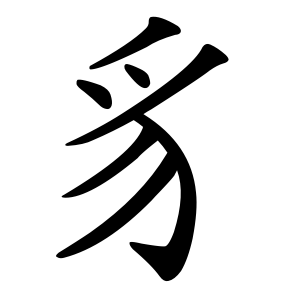豸
- insect, bug;
Etymology
According to the Shuowen Jiezi (説文解字 shuōwén jiězì), 豸 represents a long-ridged beast that slowly stalks and kills its prey. Another interpretation based on ancient script forms suggests the character depicts a large mouth placed above a long body.
豸 also carries the meaning of a legless insect or worm. According to the Erya (爾雅 Ěryǎ), insects with internal legs are called 蟲, while those without legs are called 豸, making 蟲 and 豸 together a general term for insects or bugs.
In legends, 豸 is also associated with the mythical creature called haetae (해태), a divine beast that judges good and evil.
Usage in Korean
Nowadays, 豸 is rarely used as a standalone character; it mostly functions as a radical in other characters.
When appearing as a radical or semantic component, it generally denotes meanings related to fierce animals, mainly those belonging to the cat family (felids).
- 月尸竹竹 (BSHH)
- ⿱⿳ 丿 ⺀ 丿⿹ ㇁ 𰀪
